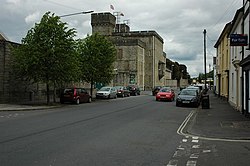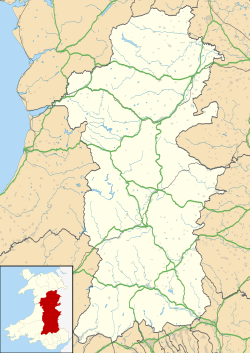History
The original barracks, which were constructed of red brick, were built at the Watton in 1805 and then extended in 1813. [1]
In 1873, as part of the Cardwell Reforms (which encouraged the localisation of British military forces), [2] the barracks became the depot for the two battalions of the 24th (2nd Warwickshire) Regiment of Foot, which began recruiting throughout South Wales. In the mid-1870s, troops from the barracks were despatched to the Cape Colony. During January 1879, the 24th Regiment became famed for its role at two momentous battles of the Anglo-Zulu War – Isandlwana and Rorke's Drift. [3] That same year, a keep, for the storage of arms and ammunition, was added to the barracks. [1]
Following the Childers Reforms, on 1 July 1881, the 24th Regiment was renamed the South Wales Borderers. [4] [5]
The South Wales Borderers Museum, now the Regimental Museum of The Royal Welsh, opened at the barracks in 1935. [6] The barracks were designated as a regional seat of government in the Cold War. [7]
Headquarters Wales was established at the barracks in 1972. [8] In 1991, the first of the minor districts to be amalgamated were North West District, the former West Midlands District (by then Western District) and Wales, to form a new Wales and Western District. [9] The enlarged district was disbanded on the formation of HQ Land Command in 1995. [10]
The barracks are now the home of 160th (Wales) Brigade. [11] In November 2016 the Ministry of Defence announced that the site would close in 2027. [12] This decision was later scrapped under the Future Soldier reforms. [13]
This page is based on this
Wikipedia article Text is available under the
CC BY-SA 4.0 license; additional terms may apply.
Images, videos and audio are available under their respective licenses.

